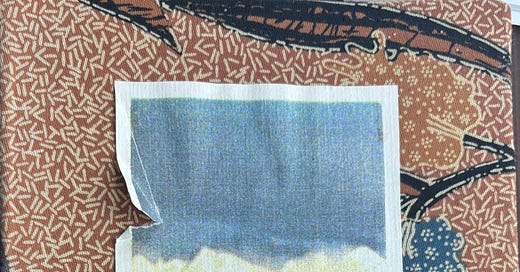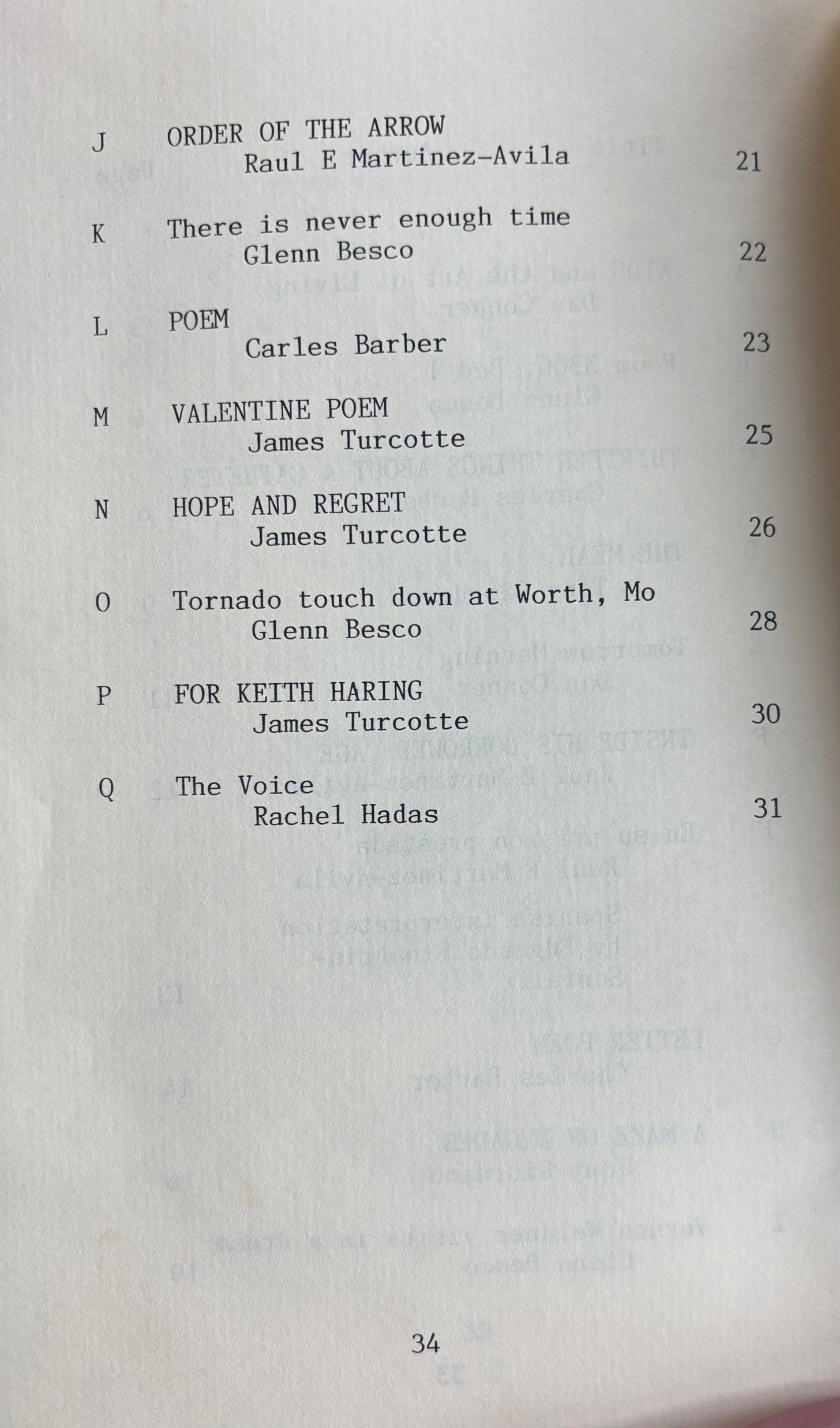In 1989 every Thursday at 3 p.m. in the basement of 129 West 20th Street in Manhattan Rachel Hadas held a poetry workshop for GMHC (Gay Men’s Health Crisis), a non-profit founded in 1982 in New York City.
The poems the group wrote were collected in a typewritten, handmade book, AIDS and the Art of Living. The poems represent a range of work and expressions from within, alongside, and in emotional proximity to the AIDS epidemic. Reflecting the extraordinary anxiety and despair of the early AIDS crisis, the poems have a caustic urgency that can’t be learned, faked, or hacked.
This is the table of contents:
Poems from the AIDS crisis teach us that loss engages with memory: all losses trigger all previous losses. So, a poet’s private memory is a window into the public memory of the event: its grief, its mores, and its metaphors.
Hadas became involved with GMHC in 1987 or 1988. She had many gay friends, and, as she described to me, she was shaken by the death (at only 54) in 1986 of David Kalstone, whom she knew through James Merrill. Many of the poets in the group Rachel convened were involved with creative expression and artistic production. For example, Tony Giordano had written plays; Charles Barber had written poems and studied ballet; James Turcotte was a bookbinder who made hand-sewn books.
Hadas said: “I think my muse had always been elegiac, and GMHC certainly related to that. Also, I began to see my city differently (who knew there were so many hospitals?), and to relate these young, dying men to heroes I was reading/teaching about in, for example, the Iliad. So: many threads, many conjunctions.”
Keep reading with a 7-day free trial
Subscribe to The Sharpener to keep reading this post and get 7 days of free access to the full post archives.






